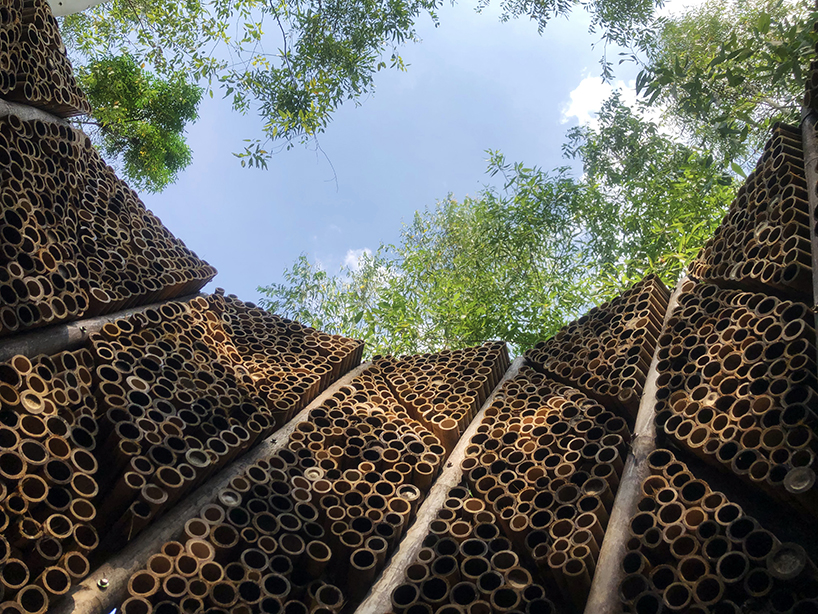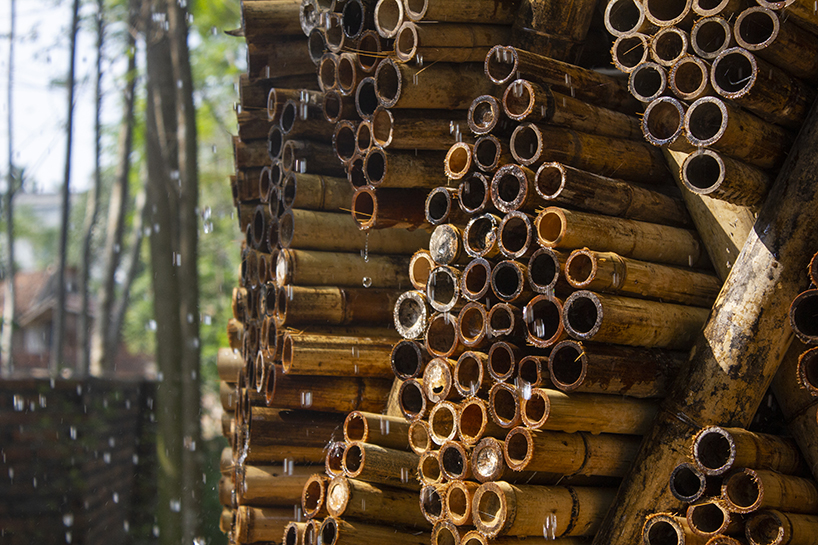AREP builds cooling bamboo tower as sustainable different to trendy AC options
this adiabatic urban cooling device could help beat the toughest heatwaves
with climate change hitting at full force, many cities worldwide will face more substantial storms and temperature fluctuations. this is especially true in vietnam where floods, typhoons, heatwaves, and drought are expected to increase both in intensity and frequency over the coming years. heatwaves, however, are probably the most cyclical climatic events that vietnamese cities will have to endure. yet, modern AC solutions come with an environmental cost. between heavy energy consumption and the leak of coolant gas into the atmosphere, today’s cooling technologies directly fuel climate change.
in light of that, french multi-disciplinary firm AREP developed a low-tech bamboo prototype for an alternative urban cooling system. using what is known as the adiabatic cooling principle, the project proposes an effective and affordable solution to sustainably cool down cities. ‘for centuries, ancient civilizations cooled down their buildings by using the natural freshness of water through the adiabatic principle. to evaporate, water needs energy which is ‘absorbed’ from the heat of the ambient air, thus generating the cooling effect,’ reveals AREP.
resorting to vietnamese craftmanship and local know-how
laureate of the seoul architecture and urbanism biennale 2021 (SBAU2021), the adiabatic urban cooling prototype could be thought of as a body of water in a park in summer: the closer you get to it, the cooler the air feels. to create that effect, the team at AREP resorted to vietnamese craftsmanship, which is still prominent in the countryside. indeed, each vietnamese village specializes in a specific trade such as bamboo, silk, and pottery. ‘this helped us design a low-tech cooling device using the adiabatic principle coupled with the know-how of a local craftsman,’ elaborates the team.
the bamboo cooling tower sits as a hyperboloid shape for structural stability. between the main poles is set up a medium on which water flows with gravity. at the center of the system is a blower that captures the hot air from above and pushes it down to lower levels. as it crosses the water twice, the air naturally cools down thanks to the adiabatic principle.
after successful testing, AREP now looks to dryer climates
to prove the efficiency of its design, AREP decided to test and build up a prototype in hanoi. the team shares its findings: ‘we developed our own BIM parametric digital model to study various potential shapes and cooling effects, and with the help of a local bamboo craftsman, we were able to build up a full-scale operational prototype. on the day of the test, we succeeded in dropping the temperature by 6°C (from 30°C to 24°C) – proving the viability of the design and making a tremendous difference in outdoor comfort as you could genuinely feel a cooler air around the device.’
AREP’s ambition now is to implement this sustainable, low-tech, low-cost solution in dryer climates around the mediterranean basin or in the gulf where the adiabatic cooling could be even more efficient. during dry and hot summers, the proposed concept could be ideal in cooling down outdoor spaces such as public squares, sunny pedestrian streets, and large structures like train stations.






